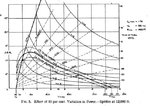"A disadvantage to some degree?" Sorry but if you need two hands to fly an aircraft, you're loosing the ability to effectively bank and thus complete coordinated turns. This was a problem in the MiG-15 and 21and is a MAJOR disadvantage.
You didn't need to hands to fly it, come on, don't twist what I say now. You can also easily bank at high stick pressures by using two hands, but it's gonna take more effort than usual compared to an a/c with light stick forces. The a/c with lighter aileron forces will be able to enter different turns quicker and therfore shake off the attacker easier. Hence why the Fw-190 was such a deadly a/c, it was bloody hard shaking one off your six.

